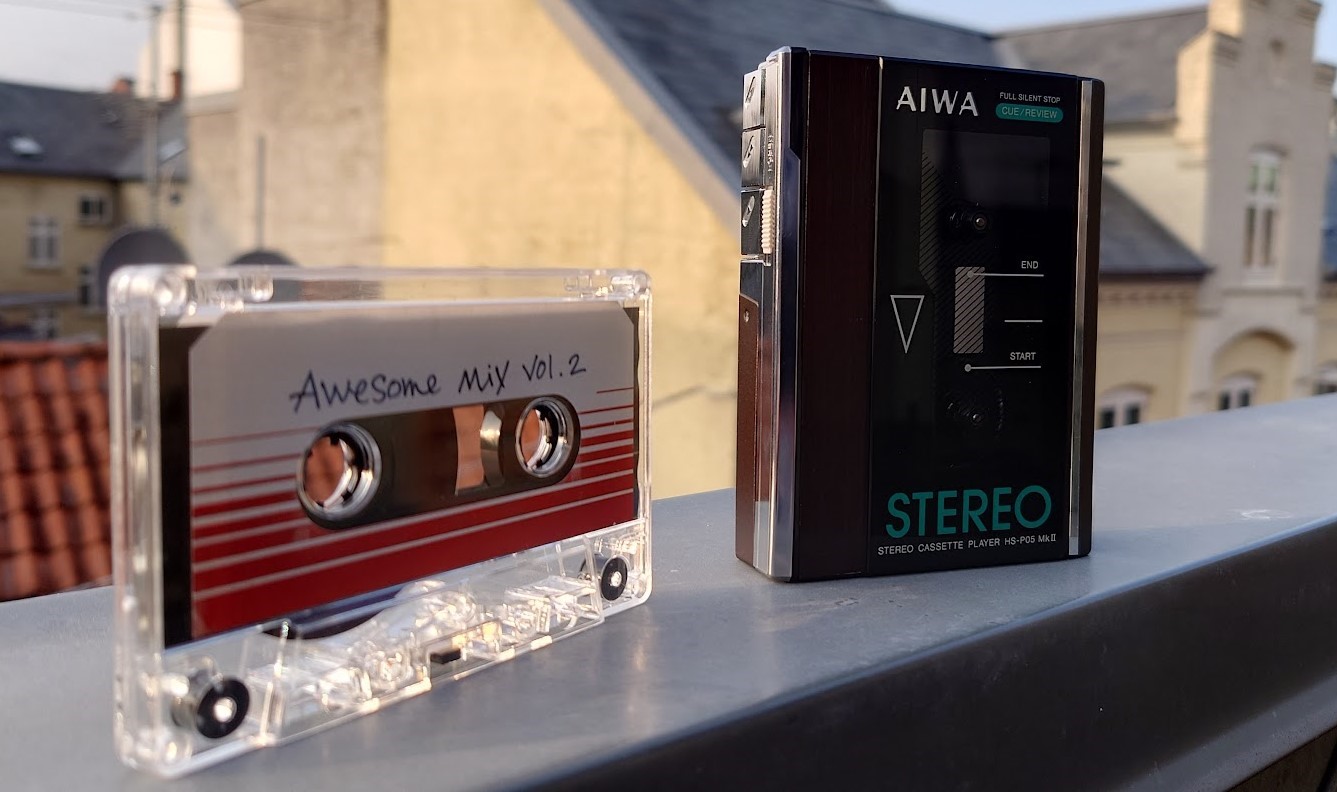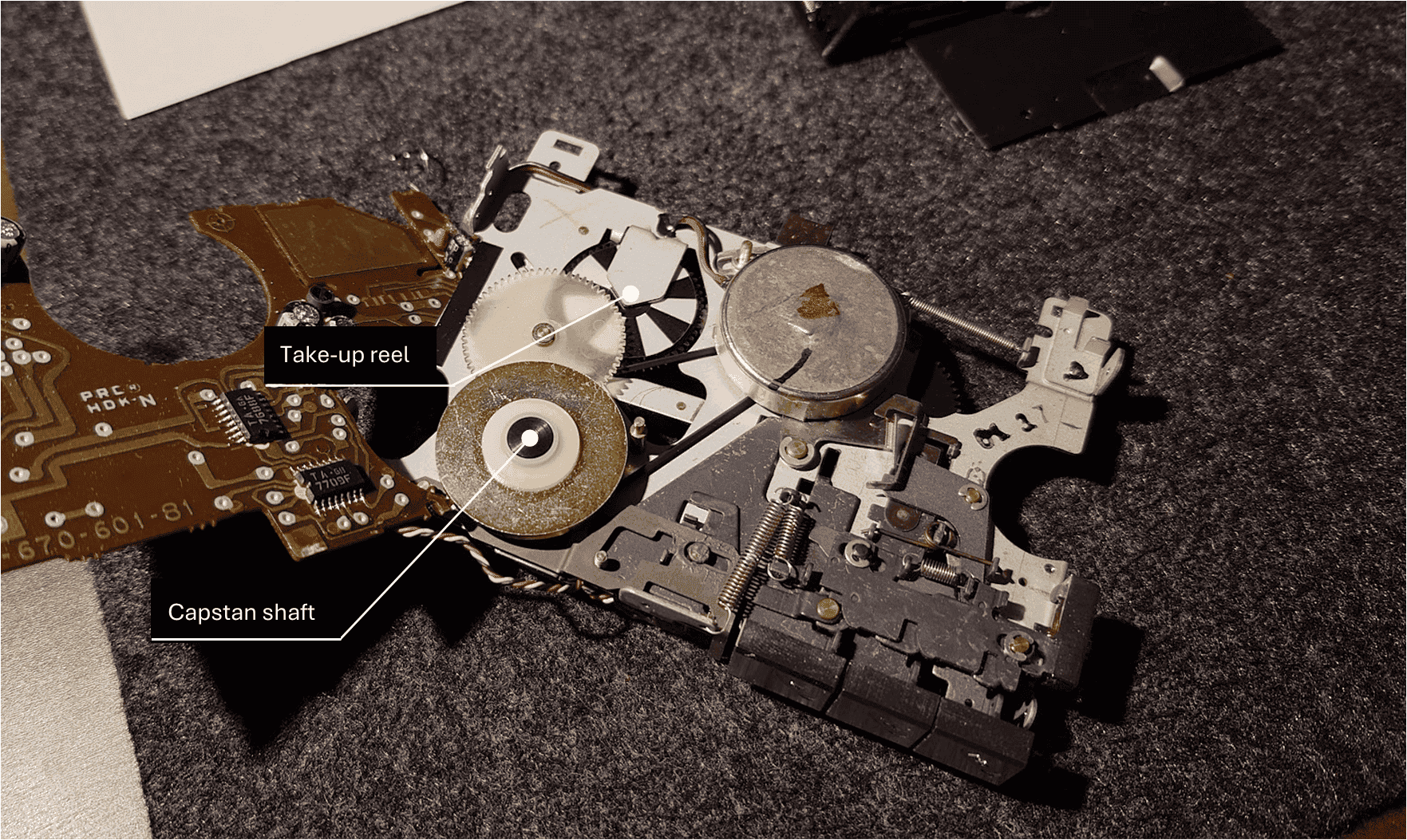Cassette culture, nostalgia, or just a love for all things vintage. This 1985 cassette Walkman ticks all the boxes. It wasn’t just a piece of tech; it was a cultural icon of the '80s and a revolution in the way we listened to music. Fast forward to today, after over a year of using this retro device, I’m ready to share my in-depth review and reflect on what it's like to use a Walkman in 2024. From the tactile pleasure of handling cassettes to the surprising ways it fits into my modern life, the Walkman has proven to be more than just a relic of the past – it’s become a meaningful part of my daily routine. Let's begin.
Why a cassette Walkman in 2024?
In 2016, Sony gave the Walkman name a second life with their modern digital model (NW-E394), sparking a brief comeback. Yet, the true resurgence has been with cassette tapes themselves, much like vinyl records have gained new traction in the mainstream. But why would anyone want to use a cassette Walkman in this digital age of instant streaming, unlimited playlists, and wireless earbuds?

The answer lies in the charm of analog. In a world where music has become immaterial, streaming services often feel disposable, offering access to millions of songs at the swipe of a finger but losing the sense of owning music. Cassettes bring back the physical interaction that’s been lost with streaming.
The cassette Walkman invites a different kind of music experience. It’s about setting aside time, selecting a tape, and enjoying the music from start to finish, free from the distractions of notifications, algorithms, and shuffle modes. And in an age of constant digital connection, that break from the digital noise can be refreshing.
These are my personal reasons for using a cassette Walkman in 2024:
1. The Art of Listening: Embracing the No-Skip Button
At first, I found the lack of a skip button frustrating. I was so used to instantly skipping songs that didn’t immediately hook me. With the Walkman, though, skipping tracks takes real effort – holding the fast-forward button for what feels like an eternity. But as I spent more time with it, I began to embrace this limitation.
In today’s world, our attention spans are shrinking. If a song or video doesn’t grab us within the first few seconds, we tend to move on immediately. Research backs this up, and I’ve found it to be true in my own life. But the Walkman, with no quick way to skip, forced me to experience albums as the artist intended. The result? I discovered tracks I might’ve otherwise dismissed. After repeated listens, those "skip-worthy" songs started to grow on me, and sometimes they became favorites.
2. Engaging with Music: The Interactive Appeal of Cassettes
You’ve got to appreciate the interactive nature of cassettes to fully enjoy the experience. If flipping a cassette feels like a major hassle, this medium might not be for you. But if you don’t mind slowing down and engaging with your music on a more tactile level, you’re in for a treat. There’s something rewarding about physically handling your music – feeling the cassette, holding the album in your hands, and truly owning your collection.
And let’s talk about mixtapes. This is the crown jewel of the cassette experience, and I think it’s underrated even today. Making a mixtape in 2024 is still incredibly fun – and honestly, it’s easier than ever. My process? I create playlists on Spotify, fine-tuning them during my workday. Once a playlist feels perfect, I make sure it fits within a 45-minute timeframe (depending on the cassette length) and then record it. Yes, you need a setup to do this, but the joy of crafting a mixtape and the satisfaction of playing it on your Walkman? Totally worth it.
3. Disconnecting from the Digital: How the Walkman Reduces Screen Time
This might sound bold, but hear me out. Have you ever noticed just how wired we’ve become to our smartphones? Whether it’s waiting for a train, standing at a crosswalk, or just idly passing time, we reach for our phones without thinking. I’m guilty of this too – it’s become second nature.
I’ve tried cutting back on screen time, but it’s tough. When I listen to music on my smartphone, the temptation to skip songs often leads to distractions. Before I know it, I’ve drifted into Instagram, checked emails, or browsed random feeds – all without realizing it. It’s unsettling how automatic it’s become.
Enter the cassette Walkman. While it’s not a magic fix, it has definitely helped reduce my smartphone use. When my phone isn't in charge of my music, I’m less tempted to pull it out. With the Walkman, I’m not constantly skipping songs or tweaking playlists. I simply listen – and in turn, I’ve found it easier to leave my phone in my pocket.

A Technical Look at the Walkman
Let’s dive into the technical details. Finding specs for vintage devices like this isn’t always easy, so I’m sharing them here. Check out this retro-style ad I created, capturing the essence of the 1980s Walkman!

Specifications
- Fast-forward and reverse
- Cue/review forward
- Instant stop
- 2x AAA battery-powered
- Supports all tape types (normal, chrome, metal)
- Supports a belt clip
- See-through front panel
- Auto-stop when the front panel is opened
Sound: The Analog Experience
You can't talk about a cassette Walkman without discussing sound quality. While it’ll never match the precision of modern digital audio, that doesn’t mean it sounds bad – in fact, far from it. People tend to remember cassettes as having awful sound quality, but there are two main reasons for this misconception:
1. Walkman Quality: Not all Walkmans were built equally. High-end models offered excellent sound, while cheaper, plastic-heavy versions didn't. I own both a Sony WM-22 (a budget model) and the Aiwa I'm reviewing. There’s a noticeable difference – the Sony WM-22 sounds muddier and less dynamic, though still acceptable.
2. Recording Quality: Back in the day, most people recorded music from other analog sources (vinyl, tapes, or radio). Each time you copied a track, the sound quality degraded. Add in low-end Hi-Fi systems, and you got a recipe for terrible audio. Today, recording straight from digital sources like Spotify or YouTube yields far better results with minimal quality loss.
Also worth mentioning is Dolby noise reduction. While this Walkman doesn’t include Dolby, I don’t feel like I’m missing out. I rarely used it, even when making my own tapes, but it’s something to consider if you’re shopping for one.
Battery Life: Recharge, Repeat
Expect an average of 4-5 hours of battery life, though it depends on the batteries you use. I highly recommend rechargeable AAA batteries like the Panasonic Eneloop series. Over time, they’ll save you money compared to disposables and pay for themselves after just a few uses.

What’s Inside: The Mechanical Magic
Let's talk about what makes this Walkman tick. I’ve opened it up a few times, and it’s a well-built, maintainable device. It has a single rubber band, and the components are easy to access.
One design feature worth highlighting is the take-up reel mechanism. Have you heard of Walkmans "eating" tapes? This happens when the take-up reel loses traction and stops spinning, while the capstan keeps pulling the tape through. This Walkman's considerable design prevents that, by directly connecting the take-up reel to the capstan (through gears), meaning the chance of a weak rubber idler tire being the problem is prevented – no tape munching! Pretty clever, right?

Repairability: Fixing a Vintage Icon
I’d rate this Walkman an 8/10 for repairability. Service manuals are available online, and if you have basic knowledge of electronics, you might not even need one. The hardest part is separating the motherboard from the case, but once that’s done, everything else is straightforward.
I’ve made two repairs on this unit:
1. Replacing the rubber band: The original had worn out (as they do), but replacements are easy to find and simple to swap out.
2. Replacing the DC motor: This was trickier. I dropped the Walkman, and over time the bearings in the motor began to fail, causing a grinding noise. Finding a replacement motor wasn’t easy, but I eventually tracked down a broken unit on eBay for parts. A professional repair shop helped me install it, and now it’s back to working perfectly.
Finding replacement parts can be a challenge, especially for key components like the DC motor. However, for common parts like capacitors and transistors, modern equivalents are easy to find. If parts like the motor were more readily available, I’d give it a higher repair score.
Verdict
Using a 1985 Walkman in 2024 is a fun, hands-on way to experience music. It’s engaging, and for those looking to cut down on smartphone use, it offers a refreshing break from constant connectivity. That said, it comes with its challenges – from battery life to occasional repairs. Still, the rewards of using this analog device are well worth it.